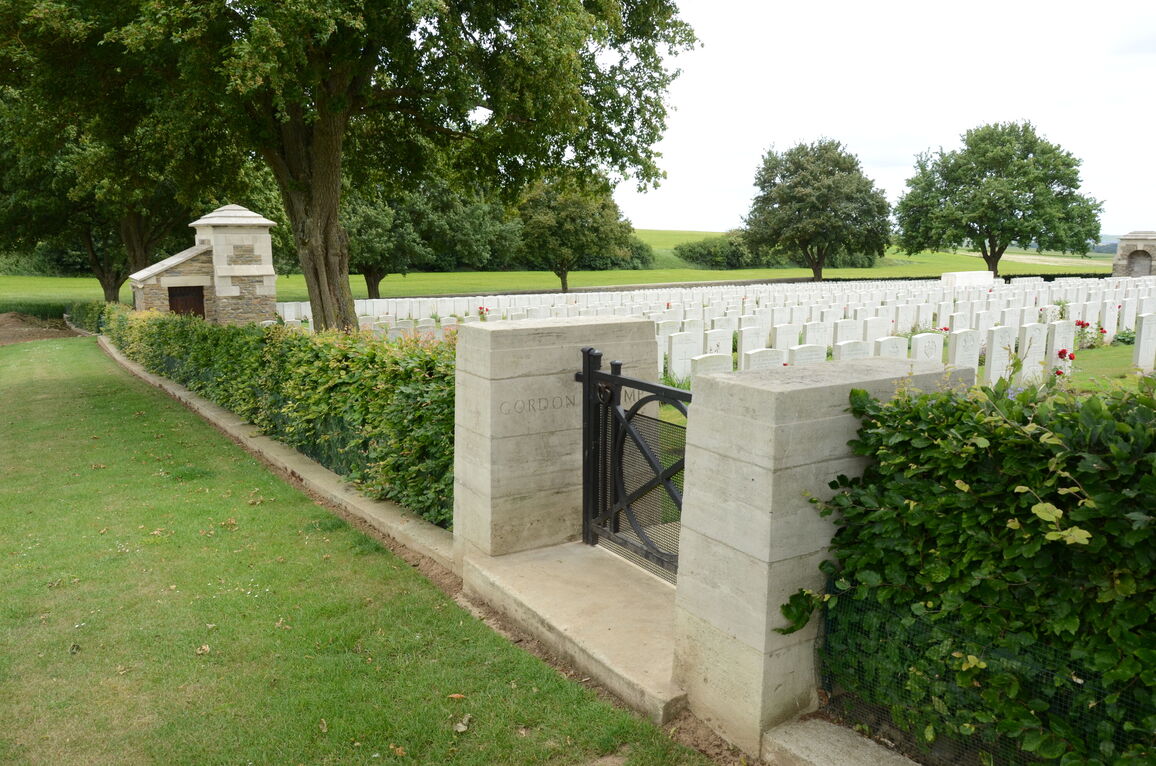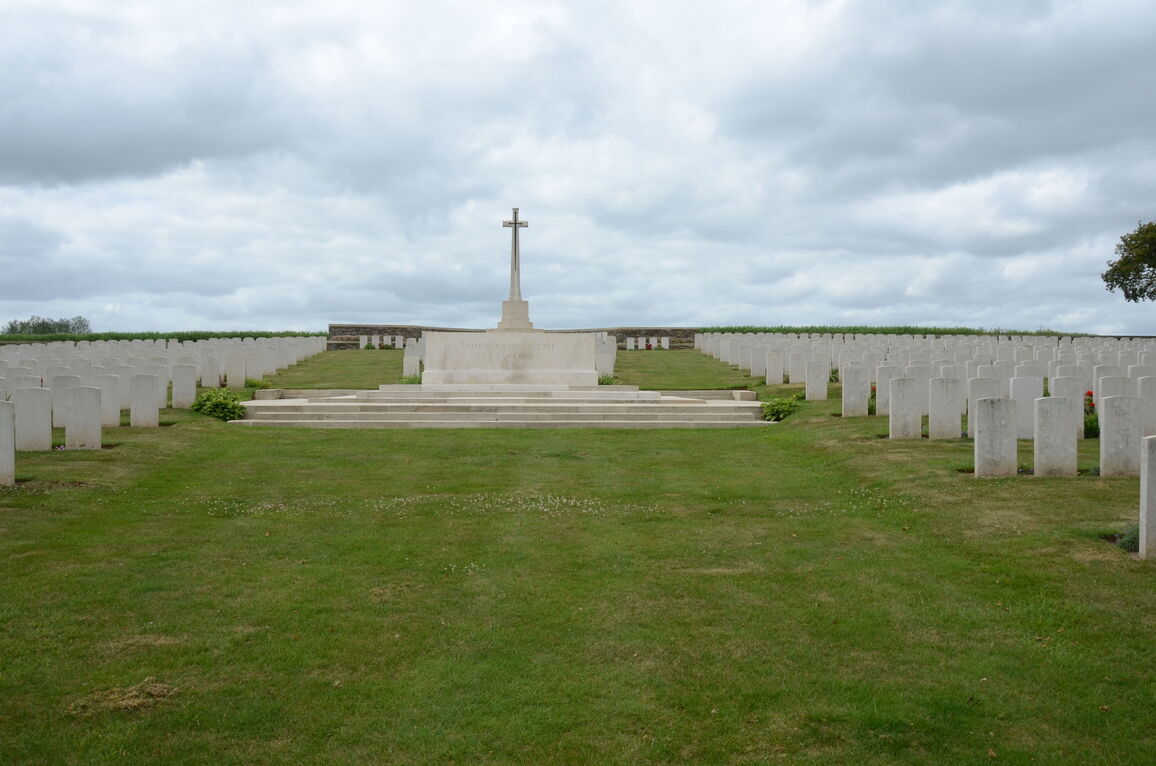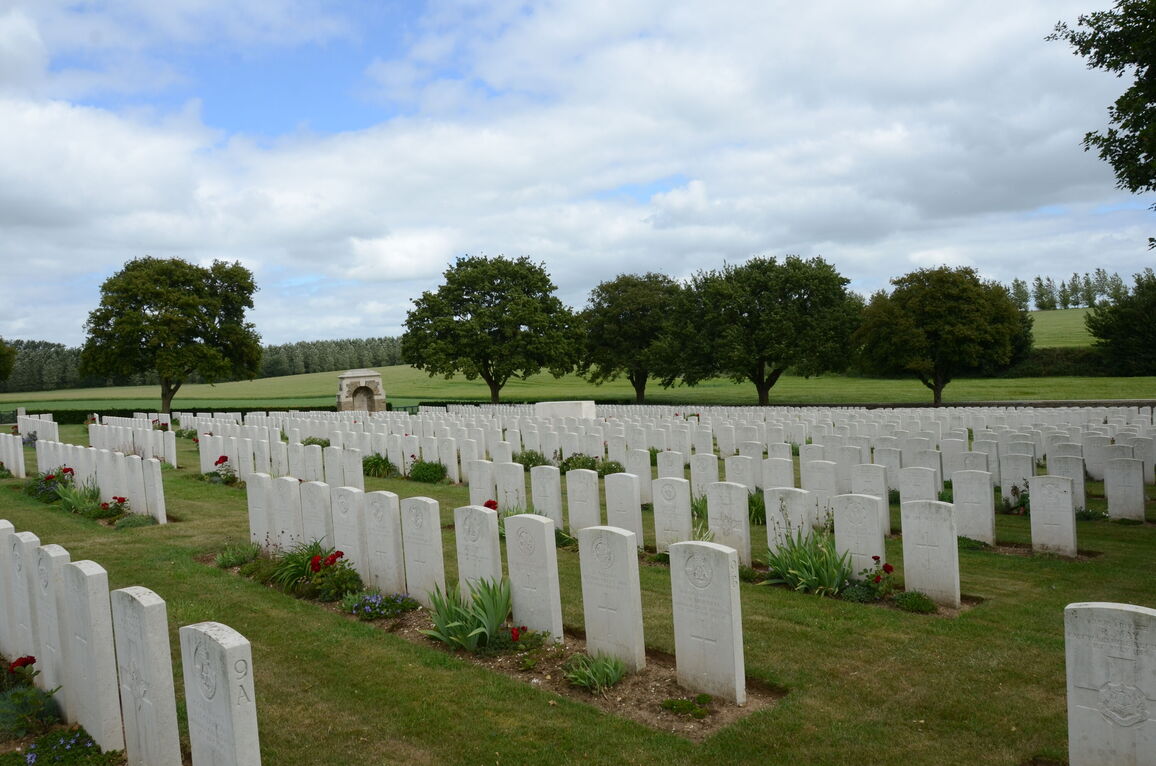Gordon Dump Cemetery, Ovillers-La Boisselle
- Country France
- Total identified casualties 624 Find these casualties
- Region Somme
- Identified casualties from First World War
- GPS Coordinates Latitude: 50.02056, Longitude: 2.70735
Location information
Gordon Dump Cemetery is 2 kilometres north-east of Albert, on the right hand side of D929 Albert-Bapaume. At Y junction (102nd Infantry Brigade Memorial) nearby the Routiers restaurant, turn right onto D20 and follow through Ovillers/La Boisselle. After 2 kilometres the Cemetery is signposted onto a 300 metre grass track.
Visiting information
ARRIVAL
The route to the cemetery is signposted at the side of the main road, the D20 (Les Champs Malpart) . The cemetery is in agricultural land.
PARKING
It is possible to park in a turning area with a gravel surface at the entrance of the track leading across fields to the cemetery. There is a rope barrier between two metal posts at the end of the gravel surfaced area. The track changes to mowed grass, with the distance to the main entrance approximately 250 metres. The Entrance is on the eastern side of the cemetery.
ACCESS, LAYOUT AND MAIN ENTRANCE
The main entrance has a low-level black metal gate above stone paving, approximately one metre wide. The gate opens inwards into the cemetery with a twist and turn pully handle at the top left side of the gate. The stone paving is approximately 100 mm higher than the grass in front of the entrance.
The paving inside the gate leads onto the grassed area inside the cemetery. There is a 75 mm wide, 50 mm deep dirt strip between the paving and the grass.
The cemetery slopes downwards from the Cross of Sacrifice towards the Stone of Remembrance and the lower end of the cemetery.
The Stone of Remembrance is located in the centre of the cemetery, to the left of the entrance, opposite the Cross of Sacrifice, to the right of the entrance.
There are four stone steps leading up to and around the Stone of Remembrance towards the Cross of Sacrifice.
There are five stone steps around the bottom of the Cross of Sacrifice and on either side leading to a raised burial area behind the Cross.
On either side at the midpoint of the cemetery stone shelter buildings opposite each other with seating areas inside both. There is a step up of approximately 150 mm to access the seats.
The Register Box is built into the cemetery boundary wall on the right-hand side of the main entrance.
All internal paths are grass, the ground is sloped.
ALTERNATIVE ACCESS
Following the grass pathway to the far end of the cemetery there is a large 2-metre-wide opening just past the shelter building. There are two moveable wooden barriers closing the opening between the shelter and the hedge.
ADDITIONAL INFORMATION
The cemetery is permanently open.
History information
On 1 July 1916, the first day of the Battle of the Somme, the 8th Division attacked Ovillers and the 34th Division La Boisselle. The villages were not captured, but ground was won between them and to the south of La Boisselle. On 4 July, the 19th (Western) Division cleared La Boisselle and on 7 July the 12th (Eastern) and 25th Divisions gained part of Ovillers, the village being cleared by the 48th (South Midland) Division on 17 July. The two villages were lost during the German advance in March 1918, but they were retaken on the following 24 August by the 38th (Welsh) Division.
Plot I of the Cemetery was made by fighting units after 10 July 1916 and closed in September when it contained the graves of 95 soldiers, mainly Australian. It was called variously Gordon (or Gordon's) Dump Cemetery or Sausage Valley Cemetery, from the name given to the broad, shallow valley that runs down from it to Becourt. The remainder of the cemetery was formed after the Armistice when graves were brought in from the 1916 battlefields immediately surrounding the cemetery.
There are now 1,676 Commonwealth servicemen of the First World War buried or commemorated in this cemetery. 1,053 of the burials are unidentified but there are special memorials to 34 casualties known or believed to be buried among them.
The cemetery was designed by Sir Herbert Baker.






